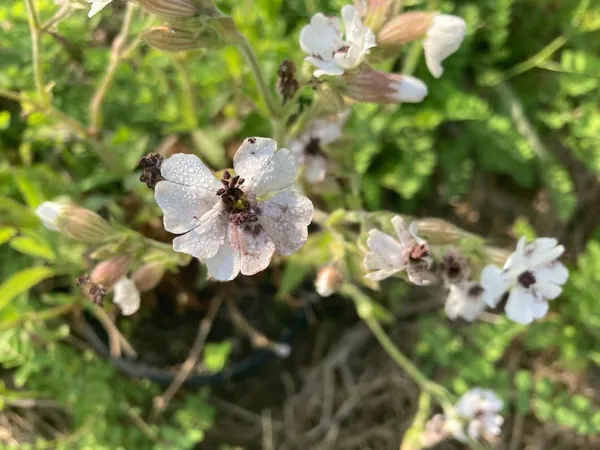
Shocking Findings: Why Young Plants Are More Susceptible to Disease Than Adults!
2025-04-05
Author: Mei
Shocking Findings: Why Young Plants Are More Susceptible to Disease Than Adults!
In a revelation that could change our understanding of plant biology and disease dynamics, researchers at the University of Maryland have unveiled new insights into why young plants, much like young animals, are more vulnerable to illnesses. The study, published in the esteemed journal *Proceedings of the National Academy of Sciences*, sheds light on a trade-off between growth energy and disease resistance that has baffled both parents of toddlers and scientists for years.
According to biologist Emily Bruns, the co-author of this groundbreaking study, the struggle plants face in developing strong disease defenses during their early life stages appears to come with a heavy toll on their growth and reproductive capabilities. “We’ve always wondered why young organisms don’t seem to evolve better defenses against diseases, especially when getting sick early can have fatal outcomes,” she explained. The findings signify that there is a hidden cost associated with combating diseases at a young age, which restricts plants from optimizing their health.
The research focused on the wild plant, Silene latifolia, also known as white campion, which falls prey to a fungal infection called anther-smut. This fungus doesn’t kill the plant outright but severely hampers its ability to reproduce by blocking pollen production—an affliction Bruns humorously refers to as a “plant STD.”
Through controlled experiments involving 45 different genetic variants of Silene, the team discovered that seedlings exhibiting higher disease resistance incurred a significant drawback: they yielded notably fewer flowers and seeds over their lifetime, especially when nurtured in disease-free conditions. In stark contrast, adult plants with robust disease-fighting capabilities did not face such reproductive penalties.
Bruns emphasizes the implications of these findings: “Young plants metaphorically ‘pay a higher price’ for defending against diseases than adults do. The energy they expend to combat pathogens detracts from their potential growth.” Essentially, if young plants devote their limited energy to fend off diseases, they compromise their future growth potential.
To further substantiate their findings, the researchers devised a mathematical model revealing that the costs tied to fighting diseases are substantial enough to inhibit the evolution of stronger resistance mechanisms in juvenile plants. If it weren’t for these costs, plant species with stronger juvenile resistance could theoretically wipe out the infection entirely. However, due to the high stakes of developing such resistance, many young plants continue to struggle with susceptibility.
Surprisingly, the adverse effects of resource allocation didn’t manifest immediately. Young plants that seemed healthy at first experienced dramatic decreases in flower production during their second year, a crucial time for reproduction.
Additionally, the study revealed an intriguing gender difference: male plants appeared to bear greater costs when attempting to develop disease resistance compared to females. Bruns suggested this might stem from the fact that male plants produce significantly more flowers in their quest to spread pollen widely, making any diversion of resources to health defenses costlier.
Moreover, the implications of this research stretch beyond the realms of wild plant biology. Understanding why juvenile susceptibility drives disease outbreaks can reshape disease management strategies across agriculture, conservation efforts, and public health initiatives worldwide.
The research team hopes to advance their work by investigating whether delaying pathogen exposure until plants are older—after they have established their first true leaves—might mitigate some of the costs associated with disease resistance. They are also keen on exploring if adult plants with heightened resistance can offer protective benefits to vulnerable seedlings by reducing disease prevalence in their vicinity.
Bruns aptly sums up the essence of this study: “Nature is rife with infectious diseases. Deciphering the intricate balance between hosts and pathogens can enlighten us on how evolution has shaped these relationships over countless millennia.”
Will this discovery change the future of plant vulnerability and disease management? Only time will tell!




 Brasil (PT)
Brasil (PT)
 Canada (EN)
Canada (EN)
 Chile (ES)
Chile (ES)
 Česko (CS)
Česko (CS)
 대한민국 (KO)
대한민국 (KO)
 España (ES)
España (ES)
 France (FR)
France (FR)
 Hong Kong (EN)
Hong Kong (EN)
 Italia (IT)
Italia (IT)
 日本 (JA)
日本 (JA)
 Magyarország (HU)
Magyarország (HU)
 Norge (NO)
Norge (NO)
 Polska (PL)
Polska (PL)
 Schweiz (DE)
Schweiz (DE)
 Singapore (EN)
Singapore (EN)
 Sverige (SV)
Sverige (SV)
 Suomi (FI)
Suomi (FI)
 Türkiye (TR)
Türkiye (TR)
 الإمارات العربية المتحدة (AR)
الإمارات العربية المتحدة (AR)